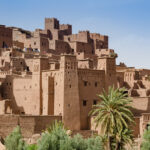Saffron is a highly valued spice that has been used for centuries in morocco. Even as a dye It is obtained from the bright yellow stigmas. And parts of the pistils of the autumn violet plant, scientifically known as Sativus Crocus. The yellow gold has a distinct flavor and aroma. That adds a unique taste to dishes, making it a highly sought-after spice worldwide.Morocco is one of the top saffron producers globally. With the Sous Massa region producing 57% of the country’s saffron and the Daraa Tafilalte region producing the remaining 43%. The cultivation of saffron is of great importance to rural communities in Morocco. As it generates a good incomes and provides employment opportunities. It’s cultivation in Morocco is primarily done through traditional farming methods. Which include manual harvesting, hand-picking, and sorting of the stigmas. The harvest season runs from mid-October to mid-November.
In recent years, the Moroccan government has been making efforts to increase its production. And promote its export to international markets. This has led to the establishment of cooperatives. That help small-scale farmers improve their production methods and gain access to markets. So the cooperatives help to ensure fair prices for saffron farmers. And reduce the exploitation of labor. Saffron cultivation in Morocco. Is a lucrative industry that has significant economic benefits for rural communities. With its high demand and unique taste. Moroccan saffron has a strong market, both locally and internationally. Making it a valuable commodity for farmers and the country as a whole.


